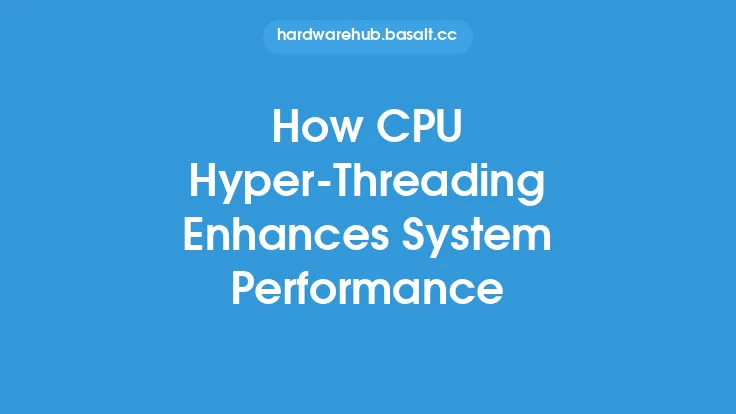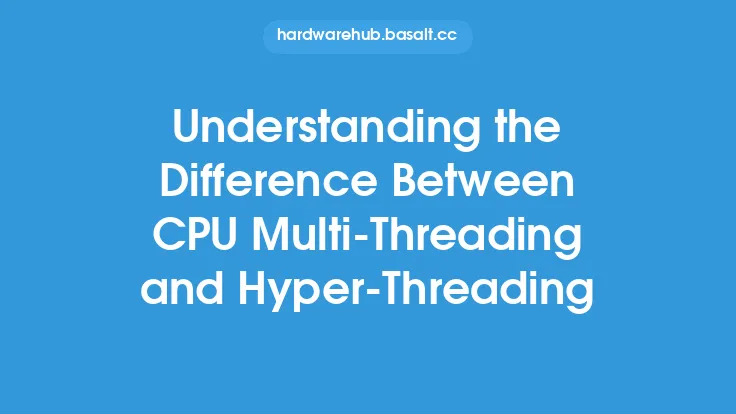The ability of a computer to handle multiple tasks simultaneously is a fundamental aspect of modern computing. This capability, known as multitasking, allows users to work on several applications at the same time, enhancing productivity and efficiency. One key technology that enables effective multitasking is CPU multi-threading. By allowing a single CPU core to handle multiple threads or processes concurrently, CPU multi-threading significantly enhances the overall performance and responsiveness of a system.
Introduction to CPU Multi-Threading
CPU multi-threading is a technique that enables a single CPU core to execute multiple threads or processes simultaneously. This is achieved by dividing the available CPU time into smaller chunks, called time slices or time quanta, and allocating these slices to each thread. The CPU rapidly switches between threads, executing a portion of each thread's instructions before moving on to the next one. This switching process is so fast that it creates the illusion of simultaneous execution, allowing multiple applications to run concurrently without significant performance degradation.
Enhancing Multitasking with CPU Multi-Threading
The primary benefit of CPU multi-threading is its ability to enhance multitasking capabilities. By allowing multiple threads to run concurrently, CPU multi-threading enables users to work on several applications simultaneously, improving overall productivity. For example, a user can browse the internet, listen to music, and work on a document at the same time, without experiencing significant performance degradation. This is particularly useful in modern computing environments, where users often need to run multiple applications simultaneously to complete tasks efficiently.
Technical Aspects of CPU Multi-Threading
From a technical perspective, CPU multi-threading relies on the concept of context switching. Context switching refers to the process of saving the current state of a thread and restoring the state of another thread. This process involves saving the thread's registers, program counter, and other relevant information, and then restoring this information when the thread is scheduled to run again. The frequency at which context switching occurs depends on the scheduling algorithm used by the operating system, as well as the number of threads competing for CPU time.
Impact on System Responsiveness
CPU multi-threading also has a significant impact on system responsiveness. By allowing multiple threads to run concurrently, CPU multi-threading enables the system to respond quickly to user input, even when multiple applications are running simultaneously. This is particularly important in modern computing environments, where users expect fast and responsive systems. For example, when a user clicks on an icon or types a command, the system should respond immediately, without delay. CPU multi-threading helps to ensure that the system remains responsive, even under heavy loads.
Resource Allocation and Management
Effective CPU multi-threading requires careful resource allocation and management. The operating system must allocate CPU time, memory, and other resources efficiently to ensure that each thread receives the necessary resources to run effectively. This involves using scheduling algorithms, such as round-robin scheduling or priority scheduling, to allocate CPU time to each thread. The operating system must also manage memory allocation, to ensure that each thread has access to the necessary memory resources.
Conclusion
In conclusion, CPU multi-threading is a powerful technology that enhances multitasking and productivity in modern computing environments. By allowing multiple threads to run concurrently, CPU multi-threading enables users to work on several applications simultaneously, improving overall efficiency and responsiveness. While CPU multi-threading requires careful resource allocation and management, its benefits are undeniable. As computing environments continue to evolve, the importance of CPU multi-threading will only continue to grow, enabling users to work more efficiently and effectively in a wide range of applications.





